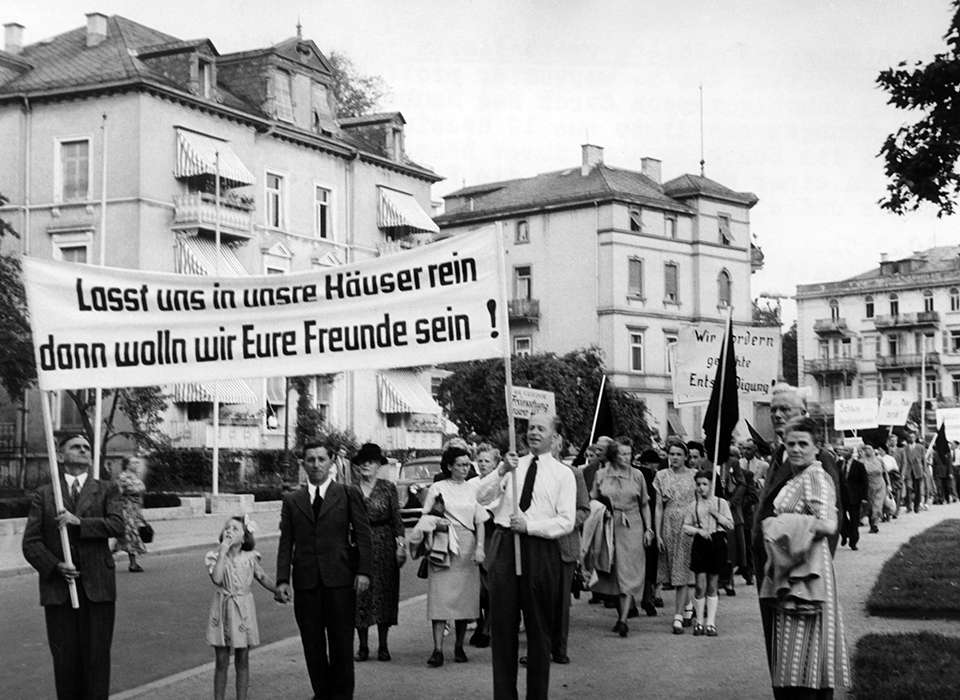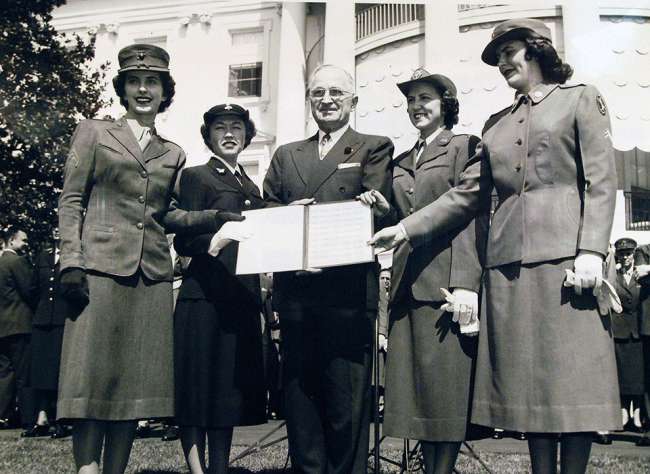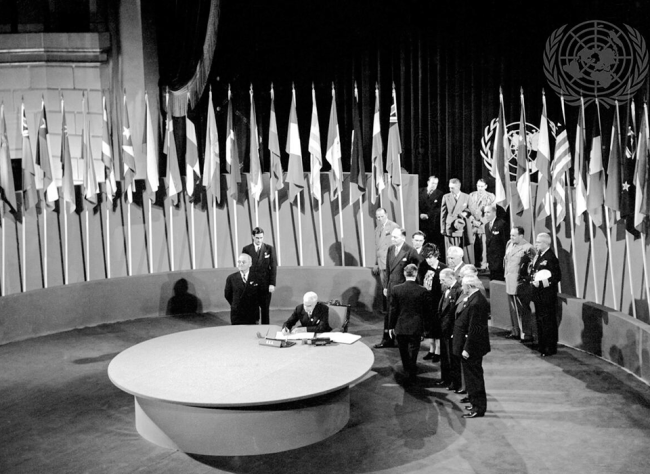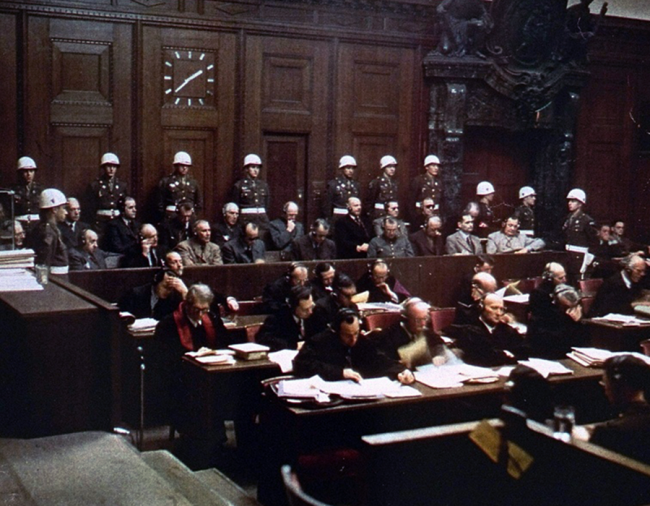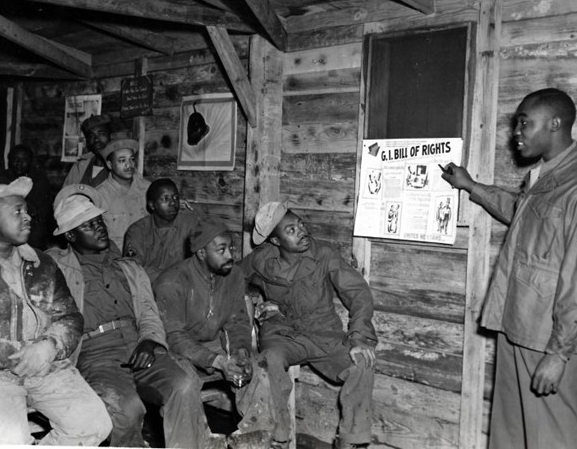Top Image: Protest march against housing requisitions in Bad Nauheim, Hesse, in the American zone of occupation, September 9, 1951.The banner at this demonstration in Bad Nauheim, Hesse, reads: “Let us into our houses, then we want to be friends.” Image courtesy of dpa Picture-Alliance, No. 28397476.
In October 1946, American occupation authorities in the Bavarian town of Bad Tölz recorded this blatantly antisemitic and racist poem:
“Betrayed by the Nazi, Lied to by the Ami”
Now you stand on the street with your broom
It would have been better to have been a real Nazi
The Jew is a black marketer, the Pole stabs you
But the Ami doesn’t see it
No matter whether you were a Nazi or not
The Ami will rob you and won’t spare you
The Ami lets the Jews come in
Because he himself is a Jewish Swine
The poem listed the three groups that were at the heart of German fears of retribution: Jewish Holocaust survivors, Eastern European Displaced Persons (DPs), and American occupation officials. The poem articulated a paranoid fantasy in which the alleged criminality of the Holocaust survivors (“the Jew is a black marketer”) and DPs (“the Pole stabs you”) was tolerated or even encouraged by US occupation officials (“But the Ami doesn’t see it”). It also anticipated an indiscriminate prosecution of Germans for Nazi crimes, and it articulated the antisemitic notion that the United States had fought World War II on behalf of Jewish interests.
Post-war German fears of revenge echoed the unprecedented escalation of violence during the last stages of the Second World War. As many German soldiers were killed during the last 10 months of the war as during the entire preceding five year period. The month with the highest German casualties was January 1945. Allied and Soviet casualties exhibited a similar peak during the final months of the war.
These staggering casualty figures resulted from the tenacity of the Nazi regime in the face of certain military defeat. The tide of the Second World War had turned by 1943, at the latest, with German defeats on the Eastern Front and in North Africa. With the collapse of Army Group Center in June 1944 and the concurrent Allied landing in Normandy, Nazi Germany’s military defeat was all but certain. Yet unlike in November 1918, the German army did not surrender but rather continued to fight with persistent ferocity and commitment.
A variety of factors explain the German army’s tenacity in the face of certain military defeat, including the Allied demand for unconditional surrender, the increasing terroristic violence of the Nazi regime, and the ideological indoctrination of Wehrmacht soldiers. But German fears of revenge also significantly contributed to the unbroken German morale in the last few months of the war. These fears derived from on an extensive knowledge of and participation in Nazi criminal warfare, especially but not only on the Eastern Front. Fears of revenge and the ensuing commitment to fight to the last minute resulted from the fearful anticipation that the victors of World War II would do to Germans what Germans had previously done to millions of victims of Nazism.
Many ordinary Germans found the possibility of defeat in World War II inconceivable and could not imagine a future beyond Hitler. Writing in her diary in January 1945, Edeltraut G. could “simply not imagine how it might be if the enemies take Germany by storm.” She wondered, “what will be next year around this time?” A few months later, in April and May 1945, Magdalena M.’s diary repeatedly invoked the future “in horrible images,” and “dark.” Lili H. confessed to her diary in March 1945 that “I cannot imagine any future, don’t know what I should be looking forward to.”
For some Germans, the inability to imagine a future beyond National Socialism led to suicide. The spring of 1945 witnessed a wave of suicides of high Nazi officials, who, like their Führer, escaped the prospect of being called to task for their deeds during the Third Reich by taking their own lives. Yet most Germans did not commit suicide and, as members of the German national community, they now faced the threat and reality of Allied retribution.
German fears of Jewish revenge centered on the Nazi propaganda notion of a “Jewish war.” By the end of the war, Germans had firmly internalized the antisemitic idea that the Second World War had been waged on behalf of a worldwide “Jewish conspiracy.” According to the reports of the Security Service (SD), the Nazi intelligence unit, many Germans saw the bombing of German cities as retaliation for the anti-Jewish pogrom of November 1938, the Reichskristallnacht, when synagogues all over Germany had been burnt down, tens of thousands of Jewish people had been arrested and hundreds of them had been killed. News of Soviet atrocities in Eastern Germany also led some Germans to draw parallels to “how we murdered thousands of Jews” and have “shown the enemy what they can do to us if they win.” The persecution of the Jews provided the images and fantasies of what might happen to Germans in the case of defeat. Rumors circulated that the Allies would force Germans to wear a swastika on their clothes, in analogy to the Jewish star that the Nazis had forced Jewish people to wear.
Actual Jewish acts of violent revenge were exceedingly rare in occupied Germany. The very nature of the Holocaust as a bureaucratically organized genocide with diffused responsibility and often remote perpetrators made it difficult to identify local and individual targets for such actions. German fears of Jewish revenge were therefore located largely in the realm of fantasy; they had little basis in actual reality.
Still, fears of retribution defined the ways in which Germans imagined their post-Nazi future. These fears also resulted from the fact that, paradoxically, the number of Jewish survivors in post-war Germany increased rapidly from only 20,000 in 1945 to 250,000 in 1947, largely because of the influx of Polish Jews who had survived the war in the Soviet Union and then fled a series of antisemitic pogroms in post-war Poland. Germans resented the better treatment, such as higher food ratios and preferred housing, that American occupation authorities granted Jewish survivors.
To many Germans, post-war society appeared as a world turned upside down, in which previously reviled people seemed to enjoy a superior status thanks to the protection of American occupation authorities. Even Jewish survivors’ facial expressions seemed to reflect this new anxiety-producing social order. “Many foreigners walk around in the city grinning, who knows how they will behave now?,” Edeltraut G wrote in her diary in April 1945. Survivors’ self-confident assertion in public stood in stark contrast to the (self) intimidation of ordinary Germans who felt pressured to downplay their national identification.
“We are no longer Germans or at least must not show it.”
Edeltraut G, one day after the previous entry
Germans perceived such role reversals also as a direct threat to their personal safety. In the fall of 1945, several rumors circulated widely that “on Nov[ember] 8 or 9 all foreigners would have the right to loot and pillage without fear or harm.“ American occupation officials considered the rumors important enough that they posted notices to deny them and arrested a man in connection with them. It is no accident that looting was to occur on November 9, the anniversary of the Reichskristallnacht. As an act of highly visible and open violence against Jews, this event featured prominently in German feelings of guilt and hence in fears of revenge.
This emotional dynamic occasionally also led to open violence, such as in Landsberg in April 1946 when rumors of the German kidnapping of Jewish DPs provoked Jewish attacks on German civilians. Yet this incident was a rare exception. For the most part, German fears of violent Jewish revenge proved to be unfounded. These fears largely remained a figment of the German imagination rather than an empirical fact of life in post-war Germany.
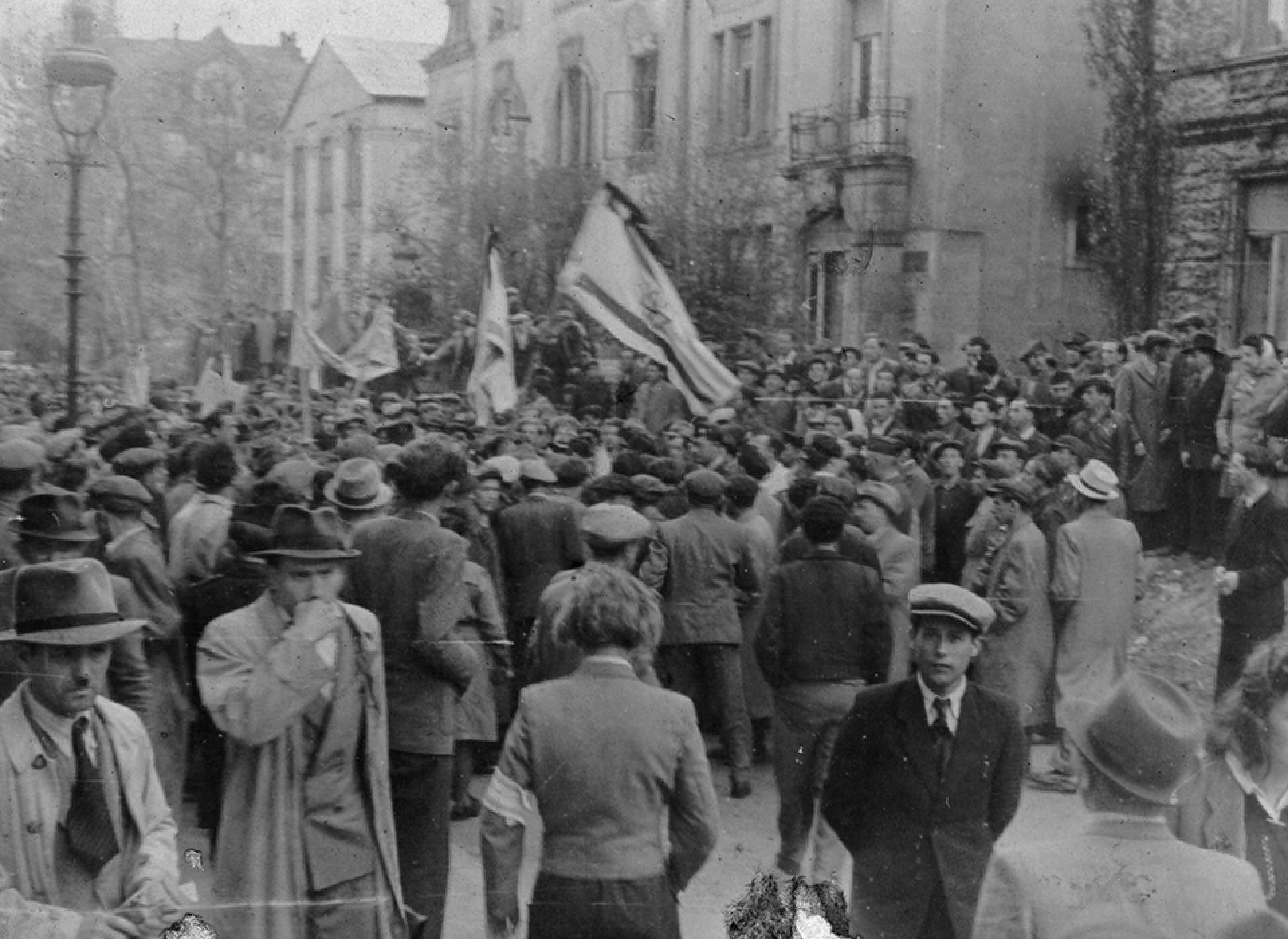
Demonstration of Jewish Displaced Persons in Frankfurt am Main, 1945. Image courtesy of bpk-Bildagentur, No. 30050504.
This discrepancy between fact and fantasy was not quite as pronounced in the case of Displaced Persons from Eastern Europe. Due to Nazi racism, Polish and Russian forced laborers had often faced abominable conditions. As in the case of Jewish survivors, German fears of Displaced Persons extended into the last years of the war when extensive rumors had anticipated an uprising of foreign workers. In the aftermath of German defeat, former forced workers celebrated their liberation with carnivalesque actions revolving around alcohol, sex, and food.
According to a report of the local press in Nuremberg, in May 1945, former Russian POWs and slave workers marched through the city drunken and with a “hostile and aggressive” attitude. They entered the Nuremberg zoo where some of them had worked during the war and killed “heartless and without mercy…defenseless and frightened animals,” including a deer, a bear, and even a lion. The symbolic significance of the incident was obvious: like the animals in the Nuremberg zoo, frightened Nuremberg citizens faced potential violence and thirst for revenge on the part of former forced laborers while not being able to count on protection by US occupation forces.
Yet, DP violence was not purely imagined or symbolic. Instead, German officials constantly complained about marauding “foreigners,” usually labeled as “Poles,” “Russians,” or “Ukrainians,” sometimes also “KZlers” (concentration camp inmates). The Regierungspräsident (a high county official) from Ansbach in the American occupation zone reported “nightly robberies” by “gangs of Poles” who shot the unarmed and unresisting population with machine guns.
"Murder, physical injuries, torture and rape of the inhabitants of the targeted farms constantly accompany these episodes of plunder.”
Regierungspräsident, Ansbach
In October 1945, 30 Poles broke into the home of Theodor E in Heimbuchtal, murdered him and his war-disabled son, committed violence against his daughter and a farm laborer, and robbed the house. The population reacted to these murders with “great embitterment” and “paralyzing fear.” Inhabitants of remote farms were particularly at risk of becoming a target of such attack and thus reported as being in particular fear.
A variety of factors drove DP violence against ordinary Germans. In many cases, escaped or bombed-out slave workers committed lootings and robberies simply to survive. They mostly stole food and were only violent with those Germans who refused them. Yet in other cases, former slave laborers sought explicit revenge. They were in a better position than Jewish Holocaust victims because they often knew the identity of their tormenters. In Pullach, a former employee of the electric power station on the Isar was reportedly killed by “his slave workers,” because he had “treated them badly.” Former superiors of DPs—“master foremen, camp commanders or plant security guards”—also frequently became targets of acts of DP violence.
A woman noted in November 1945 that, as a part of a series of “horrific murder, attacks and robberies,” “the Poles” had shot one farmer and were threatening to kill another unless he paid “back pay” for their five years of slave labor.” Former foreign workers made use of their local knowledge and targeted those individuals who had mistreated and tortured them during the war. DPs took indirect revenge as well. Reporting a robbery and plundering by 10-15 people of a farm in Mehring in the Altöttingen district, a German official cited a frequent justification, “especially by Poles,” that the “German SS has done the same thing.”
Stoked by persistent stereotypes of Eastern Europeans as “criminals,” panicked Germans clearly exaggerated the extent of actual DP violence. DP criminality remained equal or slightly below general German crime rates in the immediate post-war period and was only slightly higher than German crime rates by 1947. Reports of DP violence were inflated in German sources due to a variety of factors. German farmers occasionally invented alleged DP robberies in order to conceal the selling of their livestock on the black market.
Police reports also consistently inflated DP criminality in order to lobby the occupation authorities for the expansion and rearming of German security forces. Germans blamed DPs for their own sense of helplessness and constructed DPs as the “active, aggressive, and criminal counterpart of German society.” DPs themselves protested against the press campaign that portrayed them as “criminals” and “fascists.” Indeed, it is important to emphasize that the overwhelming majority of DPs never resorted to violence.
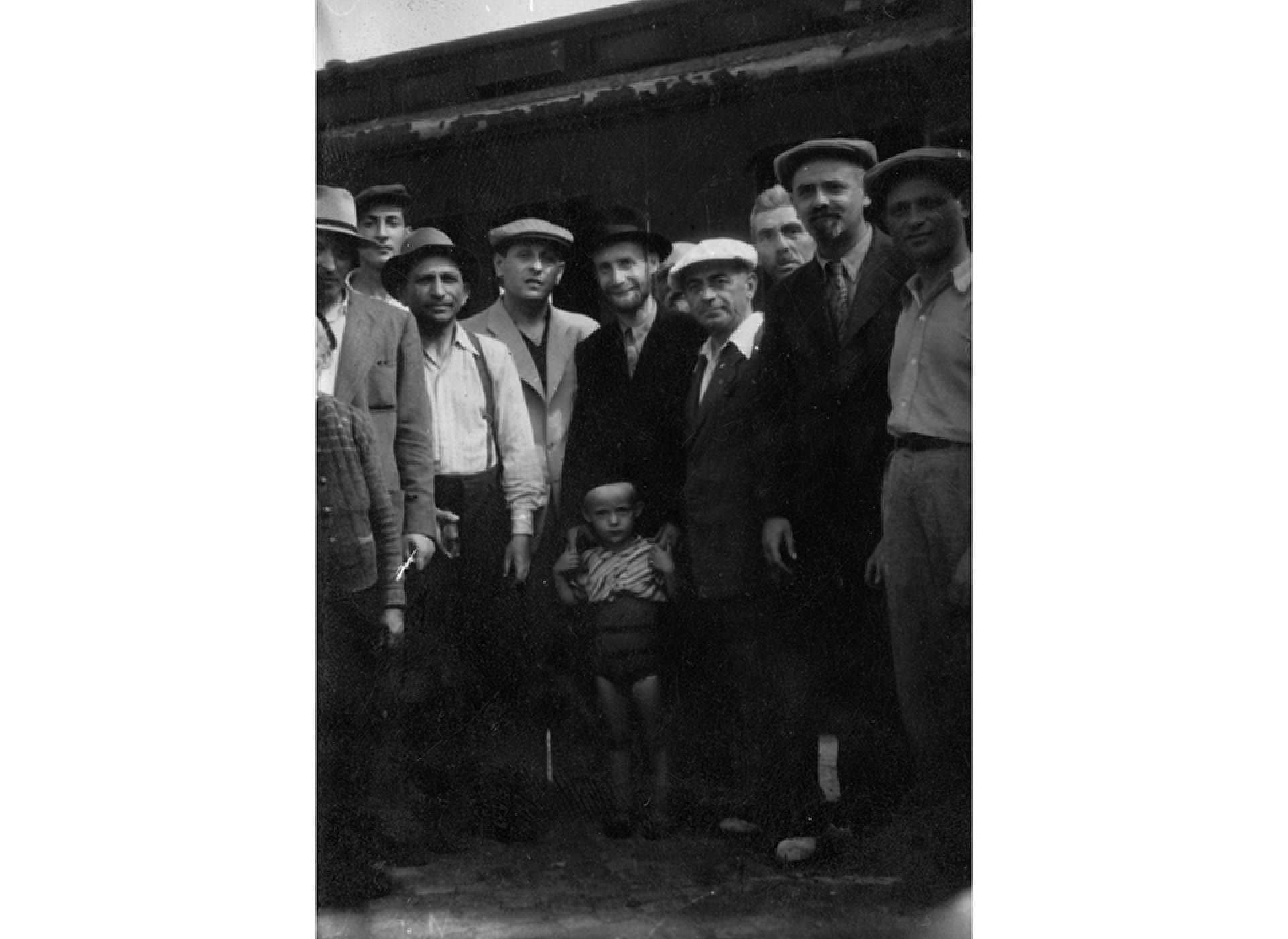
Displaced Persons, 1945. Image courtesy of bpk-Bildagentur, No. 30050648.
Still, individual acts of DP violence assumed a disproportionate symbolic significance. Stories of DP violence tended to confirm and intensify preexisting German fears of the consequences of defeat. And fears of retribution from DPs were at least partly grounded in actual events. While the German imagination of DP violence exceeded its actual reality, these occurrences lent at least some credibility to post-war fears of retribution. Rumors of widespread DP violence were contagious, and fears of retribution thus also affected those individuals who never experienced any violence from DPs.
Preexisting and lingering racist stereotypes about “Poles” and “Russians” as well as widespread knowledge of actual Nazi atrocities fueled popular fears of retribution. As such, the threat and the imagination of DP violence intensified the general climate of uncertainty and insecurity of the immediate post-war period. “We have never had such [terrible] conditions in Bavaria as we are experiencing now, not even during the war,” as one official reported.
One hope, therefore, that Germans associated with the arrival of the occupation authorities, was the restoration of order and a new sense of personal security. Yet many were shocked when they realized that, far from mitigating these anxieties, post-war occupation confronted them with new threats and challenges.
Germans had not experienced the complete foreign occupation of their country since the Napoleonic wars in the early nineteenth century. Post-war Germans were now completely dependent on Allied victors and lacked the coveted self-determination that assumed new global significance after 1945 with the onset of decolonization. Time and again, German testimonies from the spring of 1945 invoked the specter of “slavery.” Lore N. from Saxony, for example, wrote to her friend Fritz E. in Silesia in March 1945 that she did not “ want to work as slave for another people, then we would have no joy in life whatsoever.” For many Germans, foreign occupation constituted an unprecedented leap in the dark.
Fears of Allied revenge centered especially on the “Russians.” Soviet atrocities during the conquest of Germany, especially the mass rape of up to 2 million German women by soldiers of the Red Army, further confirmed these fears, which were often based on a thoroughly racist imaginary. Commenting on the entry of the Red Army into Leipzig, Thea D. (born in 1928) described the “animal like faces of the Asiatics” who represented to her “uncultivated humanity.”
Out of this fear, German soldiers and civilians alike made desperate efforts to reach British and American lines in order to escape the Red Army. Some Germans also articulated great relief, even joy and happiness to be under American rather than Soviet occupation.
“They are here,” one woman from Heidelberg noted in her diary in March 1945 of American troops, “now we no longer need to be afraid. […]. We can breathe again.”
Yet, despite such widespread preference for the Western allies, many Germans perceived occupation in general as a massive threat to their personal lives and imagined futures. Rumors of Soviet atrocities also enhanced German anxieties about Allied retribution in general. On May 6, 1945, the 20 year old Renate P. noted in her diary:
“our darkest fears have become reality over the last few days. Germany has experienced the most dishonorable and miserable defeat in centuries and has been completely defeated and thrown to the ground by the three powerful enemy powers Russia, America, and England – Germany is occupied, eradicated, it is and will be looked down upon in the whole world, the country and its people will be shunned and despised.”
American soldiers also did not see themselves as liberators of Germans, but rather as victors and occupiers. The main directive of the Joint Chiefs of Staff for General Eisenhower, JCS 1067, demanded a punitive and harsh treatment of defeated Germans. Instructions to individual American soldiers in the Pocket Guide to GermanyITALICS stated unambiguously: “You are in enemy territory. These people are not our allies or friends.”
Guidelines for troop behavior warned that “the majority of Germans supported the Nazis” and that German civilians would “try to make friends with us – to get information, to get favors, to create sympathy for the ‘poor down-trodden’ German people, to make us disagree among ourselves, or just to get a good chance to slip a knife into Allied soldiers.”
An opinion survey among US soldiers in April 1945 indicated that 76 percent “hated” or had “negative feelings” toward German civilians, while 71 percent of soldiers felt that “all or most Germans” were responsible for the war. The discovery and liberation of the concentration camps in the following month most likely intensified these negative feelings. Whatever hopes individual Germans had associated with the arrival of American occupation troops in 1945, these positive feelings were not reciprocal.
It is true that the relationship between Germans and American GIs improved progressively and eventually prepared the ground for the later integration of the Federal Republic into the Western alliance during the Cold War. But Germans living at the time could not anticipate this later development. They instead experienced US occupation as a massive intervention into their personal, even intimate lives. Three areas, in particular, emerged as sources of popular fear and anxiety: violent transgressions of American occupation soldiers, housing requisitions, and the onset of denazification.
One source of post-war fear were American acts of violence toward German civilians. Such violent transgressions were not surprising in light of the ferocity of the fighting during the final stage of the war. Serious crimes such as “homicide, rape, robbery, larceny, black market offenses etc” reportedly increased from 3.7 per 10,000 troops in August 1945 to 11.1 per 10,000 troops in January 1946. GI violence against German civilians assumed a multiplicity of forms. Some transgressions took place in broad daylight and served the purpose of publicly humiliating individual Germans for their complicity with Nazism.
In July 1945, American soldiers invaded the house of ex-soldier Georg W, struck him in the face, and forced him to stand naked at his window in broad daylight. Other cases, however, occurred at night and lacked such public dimensions. GIs approached and stopped German civilians seemingly at random, asked them for cigarettes, liquor, money, or perhaps a ride, and then beat them up, often leading to severe injuries.
In several cases reported from Amberg in the fall of 1946, drunk GIs also invaded German homes, asked for liquor or girls, or asserted their superiority by brandishing their pistols. A rapid increase in automobile accidents involving American GIs—7,800 between June and November 1945 according to one source—signaled a lack of discipline among occupation troops. A resident from the Hessian town of Marburg spoke for many when he complained in March 1946 of random and violent assaults by American occupation forces against German civilians, including several university professors.
“These assaults,” he added, “have become notorious among the civilian population of Marburg; nobody risks going out in the evenings, and people feel as if they were exposed to acts of indiscriminate brutality with no means of protection.”
Sexual assault, including rape, constituted a permanent feature of the relationship between American GIs and German civilians as well. US court martial records documented 552 cases of rape of German women by American soldiers. This was much lower than the comparable figures in the Soviet zone, though other estimates also cite higher numbers of up to 1,500 rapes between January and December 1945. A similar script governed rapes in both zones: they often resulted from soldiers’ frustration over excessive violence and German persistence during the final stages of the war; soldiers considered German women as part of a defeated and subjugated people; sexual violence served the purpose of meting out revenge by humiliating German men.
The involvement of African American soldiers in sexual relations with German women represented a particular issue of German concern. Such relationships activated preexisting racist dispositions among German civilians. “There are rumors that soon negroes will arrive as occupation troops,” wrote Edeltraut G in her diary in April 1945. “That will be horrible, then one will no longer be able to be in the street as a girl.” Undoubtedly due to their own racist dispositions in a still-segregated army, (White) American occupation officials tended to agree with German officials and citizens.
African-American GIs became a ready scapegoat for tensions between American troops over such sentiments. Official US army statistics suggested a much higher rate of “serious incidents” among “colored” troops than among White troops, which almost certainly reflected racist selectivity. Germans, for their part, quickly learned that certain forms of racism were quite compatible with American military rule. Yet, even the curtailed authority of African American GIs as occupiers confirmed German perceptions of the occupation period as a world turned upside down.
Housing requisitions were another source of post-war German fears. Housing was an extremely scarce resource in occupied Germany. In cities such as Würzburg, three quarters of the housing stock had been destroyed due to Allied bombing; the average for all four occupation zones was about 30 percent. Millions of refugees and expellees from the former German territories in the East and the gradual return of German POWs further stoked demand for housing.Therefore, it is not surprising that Germans perceived housing requisitions by the occupation army as a severe burden.
In Munich, mayor Karl Scharnagel reported to the city council in December 1946 that “in every part of the city, popular concerns are growing that the same fate [of requisitioning, F.B.] could affect every street, every house.” Rumors and news of further requisitions caused great “concern, fear, and embitterment” among the population; and Munich residents publicly proclaimed their fear of the “specter of requisitioning houses and farms.” Even those Germans who had initially welcomed the American occupation feared the loss of their home.
In April 1945, Evamaria Küchling-Marsdem noted in her diary:
the arrival of American troops had made “life in Heidelberg… normal again.” Yet, she immediately added that “we fear a confiscation of our home.”
Evamaria Küchling-Marsdem
The fact that the American military requisitioned houses for Jews, DPs, and other Nazi victims worsened German resentment. When the American military government ordered the requisitioning of 240 small houses in the Kaltherberge settlement for 2,000 Jewish Holocaust survivors in December 1945, widespread public protest ensued. Germans charged that the new inhabitants were not Nazi victims but “illegally immigrated and work-shy elements” who engaged in Black Market and other criminal activities. Outrage about requisitions also turned into violence against Jews. A former SS leader, for example, broke into his apartment, which had been given to a Polish couple. American occupation officials sought to elicit Germans’ empathy for Jewish Holocaust survivors, but German civilians and officials displayed little understanding for these arguments.
The only official program that concerned individual Germans more than housing requisitions was denazification, a process designed to eliminate Nazi influence from the defeated country. Historians have long viewed American led-denazification as an abysmal failure. Although well-intended, it eventually had the effect of whitewashing former Nazis.
Of the 900,000 denazification proceedings in the US zone, the process only rated 1,654 persons (0.17 percent) “major offenders,” 22,122 (2.33 percent) “offenders,” and 106,422 “minor offenders.” Therefore, denazification did not significantly disrupt the continuity of personnel in the civil service, the police, the educational sector, and especially the legal profession..
Yet, its long-term failure to accomplish a comprehensive purge of former Nazis reveals little about the subjective experience of denazification at the time. For many Germans, the onset of denazification confirmed some of their worst fears of Allied retribution. “How the Nazis are afraid now,” a woman from Hamburg wrote in a letter on May 7, and quickly added “hopefully, they will catch the right ones now.”
Initial denazification measures in the American zone undermined such hopes in the Allied ability to identify “real Nazis.” The occupation directive JCS 1067 stipulated the dismissal of all Nazi party members from public office as well as the “automatic arrest” of war criminals and Nazi party functionaries down to the local level. Military Government Law Nr. 8 of March 1946 increased the range of affected individuals to require the dismissal of anybody who had been a member of the Nazi party before 1937 and its affiliated organizations.
Given the mass support for National Socialism, these stipulations had a significant impact on post-war German society. By the end of 1945, some 100,000 persons had been arrested and were interned in the American zone, while another 340,000 persons had lost their jobs by March 1946, more than half of them civil servants. As a result, local administrations virtually collapsed. In Munich, denazification affected a quarter of all city employees, in the city of Würzburg, up to 70 percent, including, by August 1945, 92 percent of all teachers. Local German communities found it difficult to maintain public services as a result of denazification. Indiscriminate arrests fueled strong German popular resistance and undermined initial support for denazification.
As early as August 1945, the Regierungspräsident from Würzburg reported that the “measures against the NSDAP and its members lacks moral support among the people.” Christian churches mobilized against denazification as well, and church officials became the main spokespersons of popular opposition. In October 1945, for example, the South German Protestant Bishop Wurm denounced denazification as an expression of Allied “revenge and retribution,” particularly objecting—in a language deliberately reflecting the Nazi persecution of Jews —to the “undifferentiated extinction of all Nazi civil servants.”
Since the denazification of the economy proceeded on the same criteria of formal party membership, many individual Germans reportedly worried about their “possessions” and feared becoming part of “the outlaws and the dispossessed.” A report from Würzburg claimed in January 1946 that denazification affected 50 percent of all people in the city and called on occupiers “to take away the fear from people.”
Popular attitudes toward denazification did not significantly change with the transition of denazification into German hands in March 1946. Local denazification courts (Spruchkammern) comprised of former German anti-Nazis took charge of processing individual cases. The “Law for the Liberation from National Socialism and Militarism” required all inhabitants 18 years or older to account for their political pasts.
More than 13,000,000 Germans filled out the questionnaire on denazification, more than one fourth or 3,441,800 persons needed to undergo formal denazification because they had been members of the Nazi party or of one of its organizations. A completed denazification procedure was necessary to assume anything else than a manual labor position. Because denazification targeted overwhelmingly middle-class men, this clause implied the temporary suspension from influential positions of a large segment of the male educated middle class.
Not surprisingly, those affected by denazification reacted furiously and defiantly to these sanctions. In his novel The Questionnaire, the well-known right-wing activist of the interwar period, Ernst von Salomon, mocked the entire denazification procedure. The fact that this book became the most successful bestseller of the early post-war period indicates the depth of the resentment regarding denazification among Germans at that time.
In her “Report from Germany” in 1950, the German-Jewish philosopher Hannah Arendt observed that postwar Germans displayed a “genuine inability to feel” and a “general lack of emotion.” The intense fears of retribution that Germans articulated during the immediate post-war period contradict this statement. Fears of revenge and anxiety about an uncertain individual and collective future constituted a foundational experience for post-war Germans in the aftermath of the “Third Reich.”
Fears of retribution defined postwar Germans’ experience of defeat and shaped their anticipation of the future. The emotional function of these fears of retribution was complex and contradictory: fear served both as a veiled expression of guilt and as a defense mechanism against it. On the one hand, the extensive knowledge of Nazi crimes and hence a clear sense of guilt were among the causes of fear.
Yet, on the other hand, private and public articulations of fear and anxiety blocked a more extensive self-reflection and admission of guilt. The real and imagined consequences of this guilt appeared as too severe to many Germans. In this way, fears of retribution delayed a more extensive confrontation with the actual catastrophe that Germans had brought about for the millions of victims of Nazism.
Meet the Author
Frank Biess is Professor of History at the University of California San Diego. He has published widely on the political, social and cultural history of Germany in the 20th Century. The German version of his most recent book, Republik der Angst. Eine andere Geschichte der Bundesrepublik (2019) was a finalist for the non-fiction award of the Leipzig book fair; the English version German Angst. Fear and Democracy in the Federal Republic of Germany (Oxford 2020), from which this essay is drawn, received the Norris and Carol Hundley Award from the Pacific Branch of the American Historical Society for the most distinguished book in any category. He is currently working on a new project on the global history of the interwar Weimar Republic.
This article is part of a series commemorating the 75th anniversary of the end of World War II made possible by the Department of Defense.
Cite this article:
MLA Citation:
APA Citation:
Chicago Style Citation:
